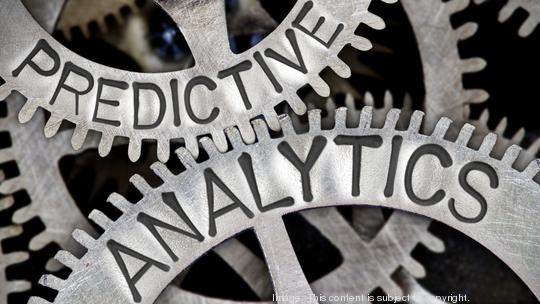
I clearly recall watching a Star Trek movie in theaters in 2009. In it, present-day Spock meets his future self. He asks this wiser future self for advice to navigate a tough situation. Wouldn’t it be great if businesses could do the same thing?
They can. Business leaders today who use artificial intelligence (AI) and analytics to crunch data insights can find patterns as never before. Predictive capabilities are at an all-time high and couldn’t be more timely, as companies reimagine the customer experience. Predicting customer expectations helps your company gain competitive advantage through personalization and other measures.
Companies in southern states could use a win
As we continue to experience the impact of COVID-19, southern states have been among the hardest hit economically. With a concentration of companies in the energy, retail and transportation sectors, the South is home to many companies who are striving to recover. Many could use predictive capabilities as they reinvent their supply chains to avoid the disruptions that occurred early in the pandemic.
Traditionally, as companies emerge from tough economic periods, they have looked to past actions and results to fuel future plans. But COVID-19 was a game changer because it permanently changed the way we consume most things. The past may not offer much wisdom.
Data-based decision making at the point of optimal impact
In situations like the one we find ourselves in, where there is a stark Before and After, companies are fortunate to be in an age of artificial intelligence (AI) and data analytics. They are well-equipped to make decisions and define strategies that better anticipate the future. But as they do so, empowering decision-making at the optimal point of value is critical. Many times, that means empowering workers closest to the customer.
MYbank uses AI for speed and accuracy
China’s MYbank thrives by using AI to scrutinize real-time data. The online lender makes collateral-free loans to small- and medium-sized enterprises (SMEs). To guide its lending decisions, MYbank uses an algorithm with more than 3,000 variables. It draws data drawn from the ecosystem of its parent company, focusing on data that predicts an applicant’s credit worthiness (e.g., the value of a SME’s receivables and its customer feedback).
The algorithm also allows MYbank to make spectacularly fast lending decisions: an application takes less than three minutes to submit on a mobile phone and less than one second to approve or reject. The upshot? MYbank has a default rate of just 1%, in comparison to the average of 2.75%, and has had the patronage of more than one-third of Chinese SMEs. It’s addressing financing gaps in the process: 80% of MYbank’s SME clients had previously never obtained a loan.
Blue Dot sees the future sooner
Blue Dot, a Canadian health-monitoring company, published a warning about COVID-19 and its potentially devastating impact on December 31, 2019, a week before the World Health Organization released its first report on the virus. Blue Dot has continued to be ahead of the curve throughout the pandemic. Feeding its algorithm with real-time, wide-ranging data—from government healthcare sources, to airline ticket data, to news reports in 65 languages— Blue Dot updates its outlook every 15 minutes.
What Blue Dot is doing is still rare. Only 6% of respondents to recent Accenture research were completely confident in their organization’s ability to foresee and respond to future events— from shifts in customer sentiment to supply-chain bottlenecks.
What’s stopping your company from seeing around the next corner?
As technology enables leaders to learn from the future, other constraints still exist, from mindset and culture to how decisions are made. Here are a few suggestions to begin down the path of breaking free.
Take a clean-sheet approach to dynamic planning, drawing on inductive, AI-driven insights, as well as creative thinking about what the future may hold. For example, instead of asking, “What would we do if our servers went down?”, firms should ask, “What would we do if there were no servers at all?”
Take a wide-angle approach to data use. Because no one knows what particular pieces of data will ultimately turn out to be important for predicting different events, there is no such thing as valueless data. Organizations that take a wide-lens approach to data use—tracking hundreds or more variables—can better inform their algorithms.
For example, in 2019 we designed a predictive data-based system to help our sales team maximize their time. Every sales opportunity companywide is now scored in less than three seconds to predict win probability, with 97% accuracy. We continue to train this AI model on more than 120,000 new sales opportunities per year, so predictions continue to improve over time.
Make learning from the future a core capability. Organizations that shift from experience-based, top-down decision-making to data-driven, bottom-up decision-making, where employees augment their judgment and intuition with algorithms’ recommendations, will excel at learning from the future.
Yet, only 38% of the companies Accenture surveyed said that employees across the organization consistently use real-time data in their day-to-day work. To overcome such obstacles, organizations need to break down silos—both technical and organizational. BMW is working to change this within its ranks. “[We] want to switch from gut-driven decisions to data-driven decisions,” said Kai Demtroder, the carmaker’s vice president of data transformation. “We have a few hundred data scientists at BMW, but the aim is to make the data accessible to everyone.”
Start learning from your company’s future self today
AI and data analytics are the closest we can currently come to introducing your company to its future self. And they can help your company do amazing things, now. There’s no need to wait until the future to get started.
Chris McManus, Strategy and Consulting Lead for the South at Accenture
